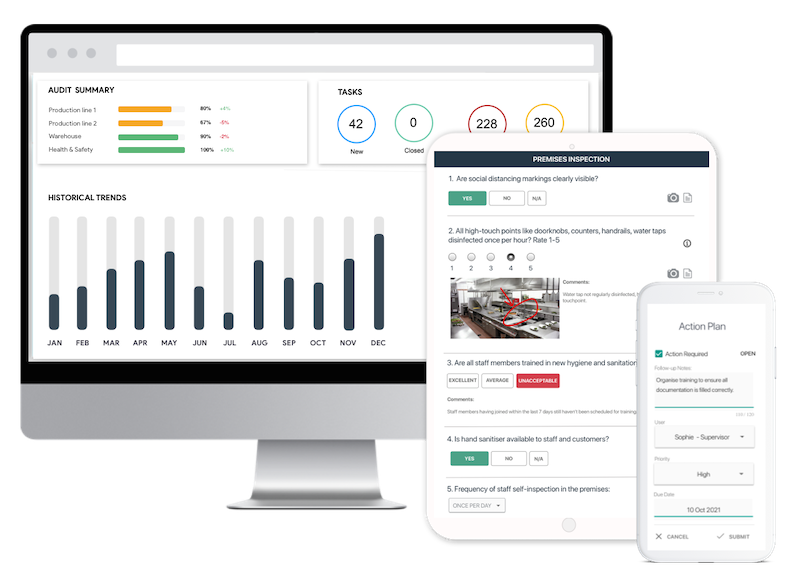- Library ›
- Facility & Services ›
- OSHA Housekeeping Checklist
OSHA Housekeeping Checklist
Walkways And Working Surfaces
Lighting
Dust And Dirt Removal
Sanitation Facilities
4. Are handwashing facilities adjacent to each toilet facility and do they contain: hot and cold or lukewarm running water and soap, or waterless skin-cleansing agents; clean, single-use hand towels stored in a sanitary container, clean individual sections of continuous cloth toweling, or air blowers; and a sanitary means for disposing of single-use hand towels?
|
Photo
Comment
|
Vermin Control
Control Of Spills
Material Handling And Storage
Storage And Maintenance Of Tools And Equipment
Waste Disposal
Is this sample what you are looking for?
Sign up to use & customise this template, or create your own custom checklist:
Checklist by GoAudits.com – Please note that this checklist is intended as an example. We do not guarantee compliance with the laws applicable to your territory or industry. You should seek professional advice to determine how this checklist should be adapted to your workplace or jurisdiction.
Easy inspection app for your digital checklists
- Conduct inspections anytime, anywhere - even offline
- Capture photos as proof of compliance or areas needing attention
- Instantly generate and share detailed reports after the inspections
- Assign & track follow-up tasks, view historical trends on a centralized dashboard

